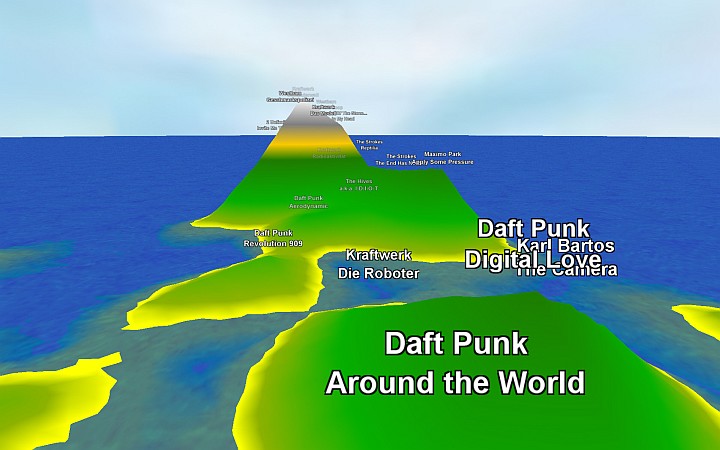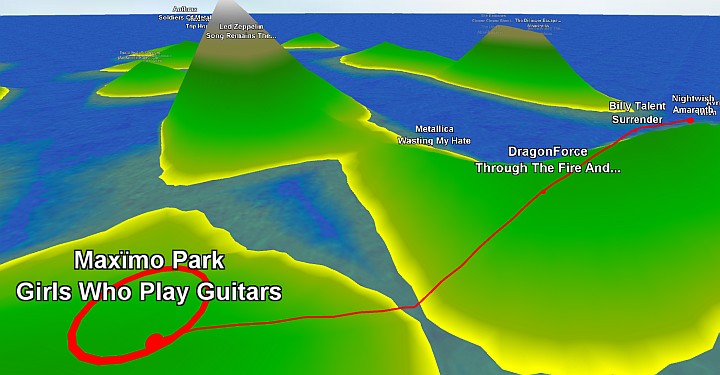
Department of
Computational
Perception

 | Department of Computational
Perception
|  |
The nepTune Interface
General Idea
Description
 | The nepTune interface offers an original opportunity to playfully explore music by creating an immersive virtual reality that is founded in the sounds of a user's digital audio collection. The interface should be fun to use and engage people. The basic ingredients are as follows: Using intelligent audio analysis, the pieces of music are clustered according to sound similarity. Based on this clustering, a three≠dimensional island landscape is created that contains the pieces (see screenshot). Hence, in the resulting landscape, similar sounding pieces are grouped together. The more similar pieces the user owns, the higher is the terrain in the corresponding region. The user can move through the virtual landscape and explore his/her collection by using a game pad. Each music collection creates a characteristic and unique landscape. In addition to seeing the music pieces in the landscape, the listener hears the pieces closest to his/her current position. Thus, the user gets an auditory impression of the musical style in the surrounding region, via a 5.1 surround sound system. |
Furthermore, the landscape can be enriched with semantic and visual information by using Web retrieval techniques. Instead of displaying song title and performing artist on the landscape, the user can also choose to see words that describe the heard music or images that are related to this content. Thus, besides a purely audio≠based structuring, nepTune also offers more contextual information that may trigger new associations in the listener/viewer, thus making the experience more interesting and rewarding.

 | Beside the exploration mode, nepTune now offers also the possibility to create playlists on-the-fly. By selecting a start and an end track, nepTune will automatically find a path along the landscape that connects various tracks and allows for continous playback with smooth transitions. A resulting playlist is displayed as a red line leading through the landscape. During playback, this path is followed automatically, making the playlist progress visually more interesting than common music player interfaces. |
Download
References
Knees, P., Schedl, M., Pohle, T., and Widmer, G. (2007).Media Coverage
Related Activities